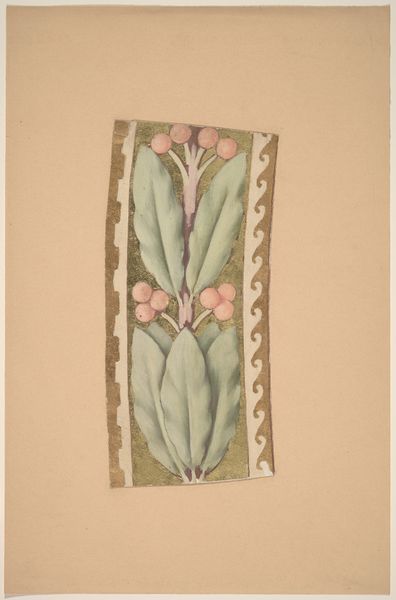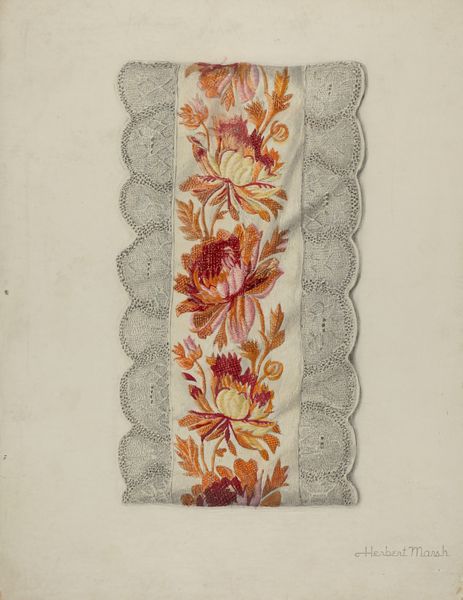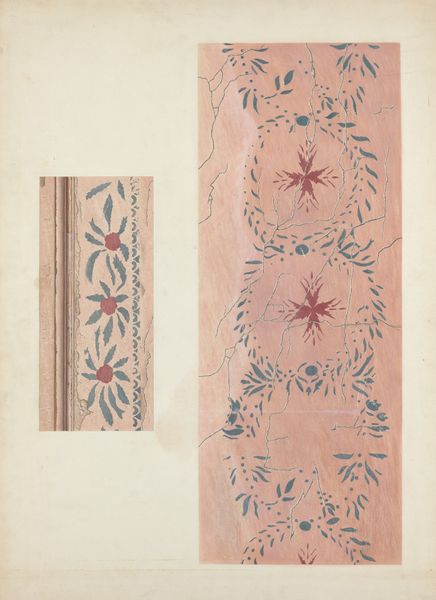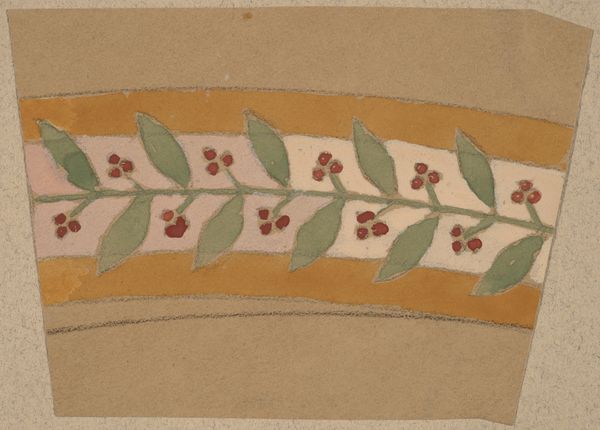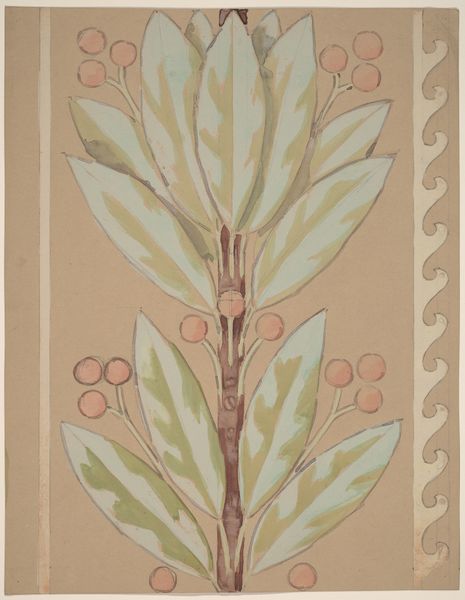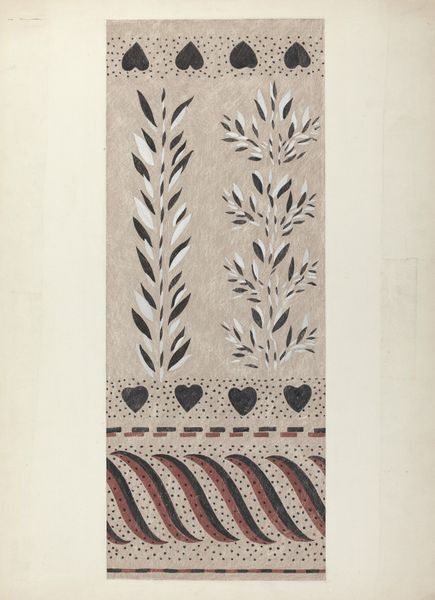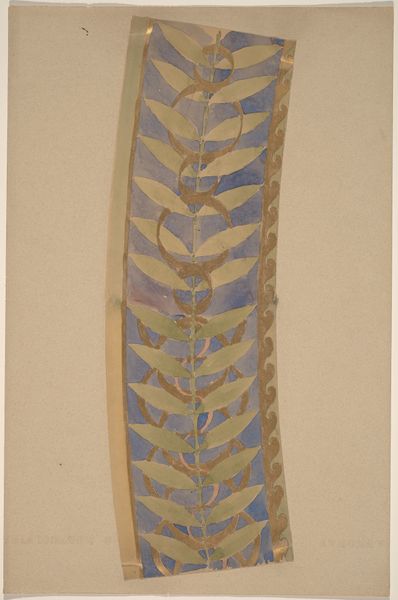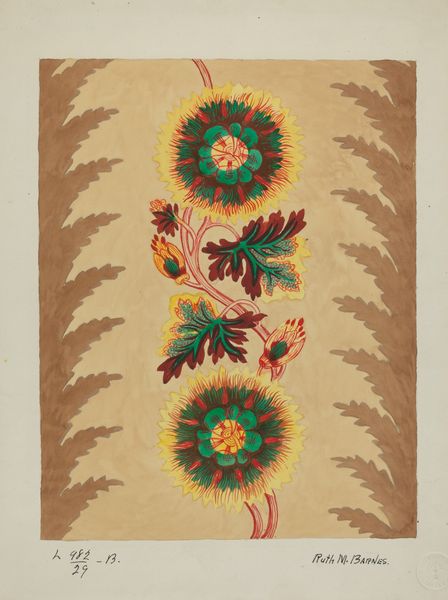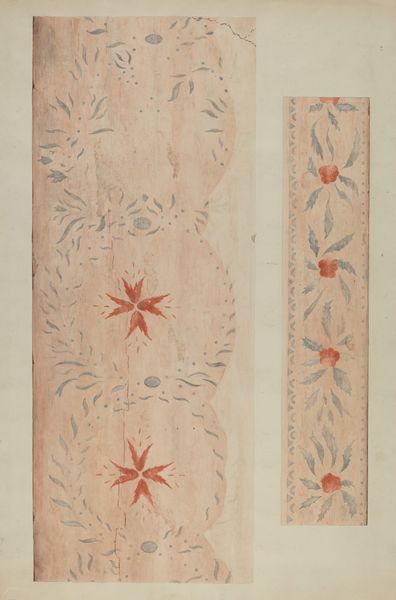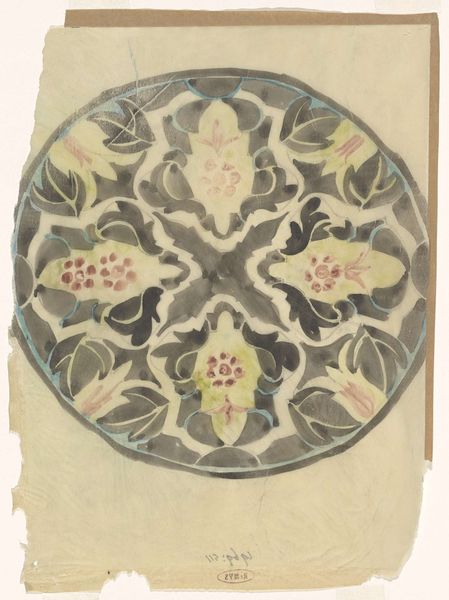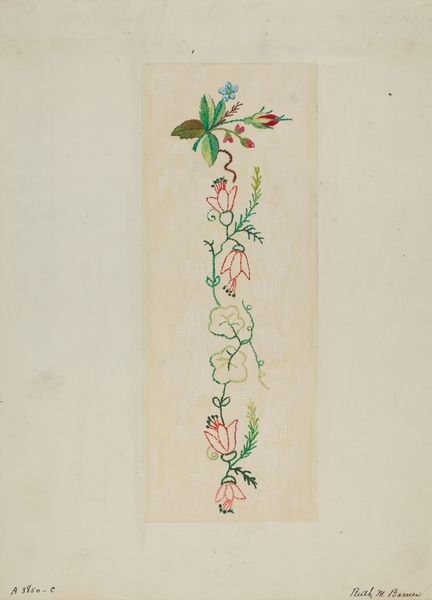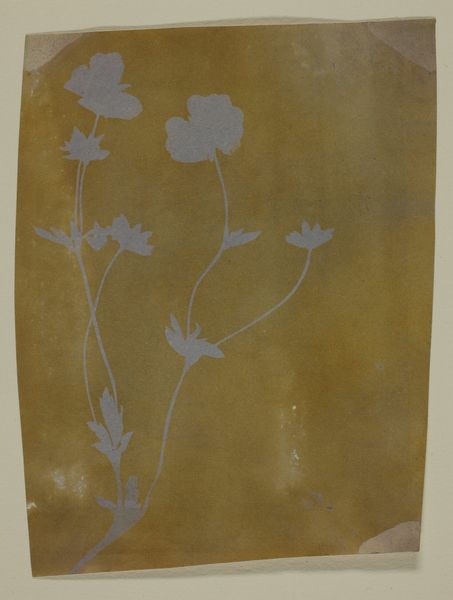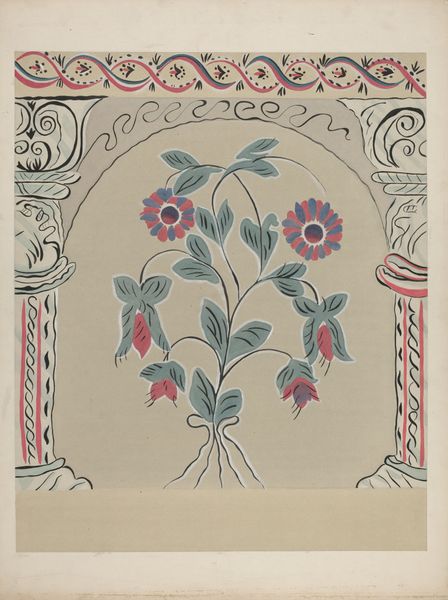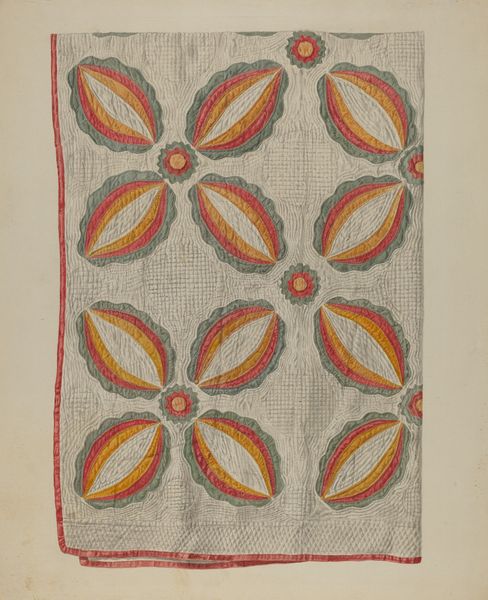
drawing, paper, watercolor
#
drawing
#
art-nouveau
#
water colours
#
paper
#
watercolor
#
watercolour illustration
#
decorative-art
Dimensions: sheet (irregular): 31.7 × 13.1 cm (12 1/2 × 5 3/16 in.) mount: 46.1 × 30.1 cm (18 1/8 × 11 7/8 in.)
Copyright: National Gallery of Art: CC0 1.0
Curator: Charles Sprague Pearce's "Study for a Border Design," likely created between 1890 and 1897. It's watercolor on paper, a delightful example of Art Nouveau's embrace of natural forms. Editor: It feels muted, doesn't it? Reserved. I immediately think of old wallpapers, of patterns hinting at a life lived quietly within certain domestic confines. Curator: Exactly. Notice the stylized berries and foliage – organic shapes reduced to almost geometric simplicity, yet retaining that vital spark of life. What resonates for me is Pearce’s meticulous process: planning out the border pattern for, perhaps, a much larger, grander commission. There's beauty even in these preliminary studies. Editor: Absolutely. You get the sense of labor involved – the repeated motif, the controlled washes of color. This wasn't just inspiration; it was applied skill, a craftsman meticulously constructing something beautiful and functional. Think of all the layers of making: the production of paper, watercolor pigments, the tools used by Pearce to produce these art works. It's a chain that stretches from factory floor to final product. Curator: I agree. And in a world rapidly industrializing, the Art Nouveau movement offered a gentle, handcrafted rebellion. These designs brought nature indoors, softening the sharp edges of modern life. The symbolism, though subtle, speaks of growth, renewal, a deep connection to the earth. It’s a whispered conversation, not a shout. Editor: And those pale, almost ethereal washes… There’s a vulnerability to the medium. Watercolors on paper, in particular, lack a robust physical structure, embodying themes of ephemerality that art nouveau explores. It serves as a study in decorative art, while also demonstrating a strong sensitivity to materials and production processes. Curator: Beautifully put. It reminds me that even within ornamentation, within design meant for everyday use, there's a space for the soul to breathe. It's a fragment that contains a whole world. Editor: Right, seeing beyond the surface invites a consideration of the human touch that goes into even something as ostensibly ‘decorative’ as a border design.
Comments
No comments
Be the first to comment and join the conversation on the ultimate creative platform.
